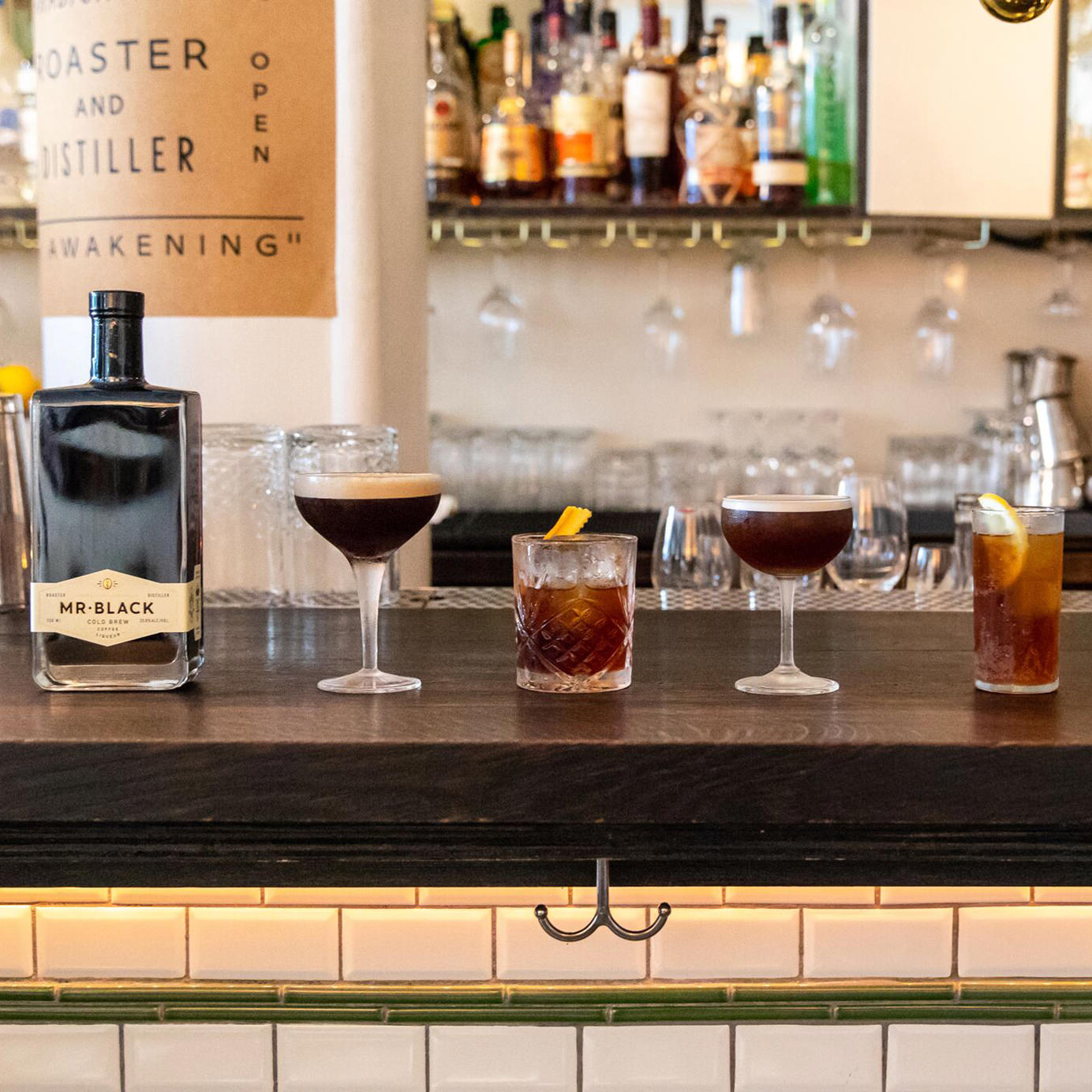In the 1980s London-based bartender Dick Bradsell invented what has since become one of of the world’s most popular cocktails: the Vodka Espresso. A rich, creamy combination of vodka, espresso, and coffee liqueur, this jolting concoction was the drink of choice of exhausted party animals well before Red Bull landed on every bar shelf across the globe. Served in a V-shaped cocktail glass, the drink became known as an Espresso Martini.
Global cocktail culture has changed dramatically since this drink’s inception three decades ago, but the Espresso Martini has remained largely unchallenged. It was generally the only coffee-based cocktail on bar menus — if there was one at all.
“There is a good reason why bartender and barista are two separate professions,” Franz Zauner, Le Méridien’s global master barista, says. He helps oversee the hotel brand’s portfolio-wide coffee initiatives, which includes designing coffee-house-style lounges and bars and creating locally inspired coffee cocktails for almost every property’s bar menu.
“Making a decent espresso is certainly an art and takes quite a bit of coaching and practice that I think most bars lacked,” Zauner says. “Coffee has a very distinctive powerful aroma that [requires specific] skills to incorporate in cocktails.”
These days, however, cocktail and coffee cultures are surging in tandem. As celebrated cocktail bars and NYC-style speakeasies open worldwide, so are “third-wave” coffee counters specializing in carefully sourced and served espresso and coffee drinks. Now, for some creative bartenders, coffee is almost as versatile a cocktail ingredient as tonic water.
“I think the emergence of cold brew coffee has contributed a lot to the improvement of coffee cocktails,” Miguel Lancha says. He helms “cocktail innovation” at José Andres’ Barmini in Washington, D.C. “[Cold brew] gives cocktails the bold flavors of coffee without any of the bitterness associated with traditionally brewed coffee.”
At Barmini, Lancha keeps a record of every drink that’s been crafted and served. He says that incorporating several coffee-based drinks has been instrumental in maintaining his well-balanced, 200-drink-strong archive. At any given time, the drink menu typically features a few coffee drinks instead of the token one you would find at other bars. Some of these recipes are built with specialty coffee makers: Sigmund’s Discovery in Vienna, for instance, calls for coffee that’s been prepared with a tower that brews drip by drip to maximize flavor concentration while reducing bitterness.
Lancha says the drink that best represents his program is José in the Afternoon, a bright blend of coffee, Cava, Spanish brandy, lemon, and lemon verbena. It was inspired by Chef Andres himself, who tasked Lancha to make a cocktail after he realized that drinking Cava and coffee together produces delicious results.
“There is no limit to the uses of coffee in cocktails,” Lancha says.
Back when Dick Bradsell created the Vodka Espresso, if a bartender wanted to include coffee liqueur in a cocktail recipe, he or she had limited options: Kahlua or Tia Maria. And if that bartender happened to not like or have their hands on either, the chances of making a coffee cocktail became almost nil.
The recent uptick in craft coffee liqueur production has also been vital in reinvigorating the category. Many brands are now distilling spirits with coffee, including St. George Spirit’s New Orleans-inspired coffee liqueur and Fair Cafe, from Cognac-based distillery Fair, which focuses on fair-trade practices.
But what has the bar world buzzing is the arrival of Mr. Black, an Australian liqueur first launched in 2013. According to founder Tom Baker, what sets Mr. Black apart is its coffee focus. Baker and his team roast and distill their product themselves; while other brands create a variety of spirits and liqueurs, Mr. Black is exclusively dedicated to making the best coffee liqueur.
This singular dedication has proven to be a hit. It’s only just arrived in New York, and it’s already been picked up by nearly a hundred bar accounts, including such celebrated destinations as Dante, Bar Goto, and The Aviary.
“Up until recently there hasn’t been many good coffee liqueurs for bartenders and consumers to work with,” Baker says of the launch’s success.
Baker’s favorite use for his product is a Cold Fashioned, which adds 45 milliliters of Mr. Black to a traditional Old Fashioned recipe, a tweak that reinforces the ingredients’ naturally bitter flavors.
“Since the start of Mr. Black five ago year, we saw the dual rise of coffee culture and craft distilling,” Baker adds. “And it’s really culminating now with incredible coffee cocktails being offered at top venues around the world.”
Mr. Black is currently available in select Australian cities, London, and now New York.
Baker believes coffee cocktails are most likely to explode in places where there’s a third-wave coffee scene brewing. Le Méridien has over 100 hotels worldwide, though, and is implementing its coffee-obsessed strategy in as many of its locations as possible, both by design and on request. Coffee drinks could easily go the way of chartreuse, amaro, or other cocktails involving other once-obscure, specialty ingredients.
Wake up, Espresso Martini. You’ve (finally) got company.
